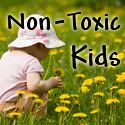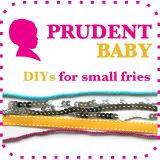Saturday, September 20, 2008
The perfect "sleep number" bed is one that has a ZERO in toxicity...
Original post written for 5 Minutes for Going Green.
In recent years there have been studies and news stories about the danger inherent in our bed mattresses. Conventional mattresses contain toxic chemicals which leach out into the air over time (off-gassing).Mattresses today are required by law to have fire retardant materials in them to allow consumers more time to get out of their homes in the even that there is a mattress fire. While that is the goal, the exposure that consumers may have to fire retardant materials in the mattress may be leading to the same potentially lethal outcome.Boric acid, a household product often used to kill roaches is now being added to some mattresses to help them pass the government’s flammability test. Other chemicals being used include antimony trioxide a flame retardant chemical which has been dubbed by consumer groups as a “probable carcinogen.”The alternative to these toxic mattresses are natural or organic mattresses and covers.Eco-friendly mattress suppliers offer mattresses that use materials that are often renewable, all natural and not toxic to humans. There are two general mattress constructions that are popular today – coil inner spring and rubber mattresses.The coil inner spring mattress consists of metal coils wrapped in organic wool. The natural wool acts as a fire retardant and regulates body temperature. By the way, organic wool is produced without the use of hormones or pesticides and is a sustainable resource.Surrounding the organic wool is organic cotton which serves to make the mattress softer.The other popular option for eco friendly consumers is the natural rubber mattress. These mattresses have a core made of a rubber (a completely renewable resource) that acts much like a memory foam mattress. You get great support and you’re not likely to feel any movement from the person next to you. Wrapped around the rubber core is usually a layer of organic wool which serves as a fire retardant and to regulate moisture.For your young infant there are also natural crib mattresses. Make sure to choose a mattress made with organic cotton filling. Also pay attention to the substances used in the mattress cover that will be beneath your child. Many crib mattresses are covered in materials made with highly toxic vinyl/PVC. An environmentally friendly alternative to toxic vinyl/PVC is Polyethylene. This environmentally friendly plastic is used throughout the food packaging industry for its non-toxic properties and its recyclability.Conventional mattresses have that awful off-gassing property which puts us at great risk of being exposed to potential carcinogens over a long period of time. Organic mattresses are made of products that are natural, often renewable and aid in repelling dust mites (which can’t survive in many of the materials used like rubber and wool). Remember our beds and bedrooms are where we spend a good deal of our time so investigate your eco-friendly mattress options carefully.You can read more from Tiffany at her blog about Green Parenting, where she writes about green family living, parenting, natural health, safe children's products, and homeschooling. Subscribe to her blog here.
In recent years there have been studies and news stories about the danger inherent in our bed mattresses. Conventional mattresses contain toxic chemicals which leach out into the air over time (off-gassing).Mattresses today are required by law to have fire retardant materials in them to allow consumers more time to get out of their homes in the even that there is a mattress fire. While that is the goal, the exposure that consumers may have to fire retardant materials in the mattress may be leading to the same potentially lethal outcome.Boric acid, a household product often used to kill roaches is now being added to some mattresses to help them pass the government’s flammability test. Other chemicals being used include antimony trioxide a flame retardant chemical which has been dubbed by consumer groups as a “probable carcinogen.”The alternative to these toxic mattresses are natural or organic mattresses and covers.Eco-friendly mattress suppliers offer mattresses that use materials that are often renewable, all natural and not toxic to humans. There are two general mattress constructions that are popular today – coil inner spring and rubber mattresses.The coil inner spring mattress consists of metal coils wrapped in organic wool. The natural wool acts as a fire retardant and regulates body temperature. By the way, organic wool is produced without the use of hormones or pesticides and is a sustainable resource.Surrounding the organic wool is organic cotton which serves to make the mattress softer.The other popular option for eco friendly consumers is the natural rubber mattress. These mattresses have a core made of a rubber (a completely renewable resource) that acts much like a memory foam mattress. You get great support and you’re not likely to feel any movement from the person next to you. Wrapped around the rubber core is usually a layer of organic wool which serves as a fire retardant and to regulate moisture.For your young infant there are also natural crib mattresses. Make sure to choose a mattress made with organic cotton filling. Also pay attention to the substances used in the mattress cover that will be beneath your child. Many crib mattresses are covered in materials made with highly toxic vinyl/PVC. An environmentally friendly alternative to toxic vinyl/PVC is Polyethylene. This environmentally friendly plastic is used throughout the food packaging industry for its non-toxic properties and its recyclability.Conventional mattresses have that awful off-gassing property which puts us at great risk of being exposed to potential carcinogens over a long period of time. Organic mattresses are made of products that are natural, often renewable and aid in repelling dust mites (which can’t survive in many of the materials used like rubber and wool). Remember our beds and bedrooms are where we spend a good deal of our time so investigate your eco-friendly mattress options carefully.You can read more from Tiffany at her blog about Green Parenting, where she writes about green family living, parenting, natural health, safe children's products, and homeschooling. Subscribe to her blog here.
Subscribe to:
Post Comments (Atom)













Hi I found your site by mistake when i was searching yahoo for this acne issue, I must say your site is really helpful I also love the design, its amazing!. I don’t have the time at the moment to fully read your site but I have bookmarked it and also add your RSS feeds. I will be back in a day or two. thanks for a great site.
ReplyDeleteare memory foam mattresses safe